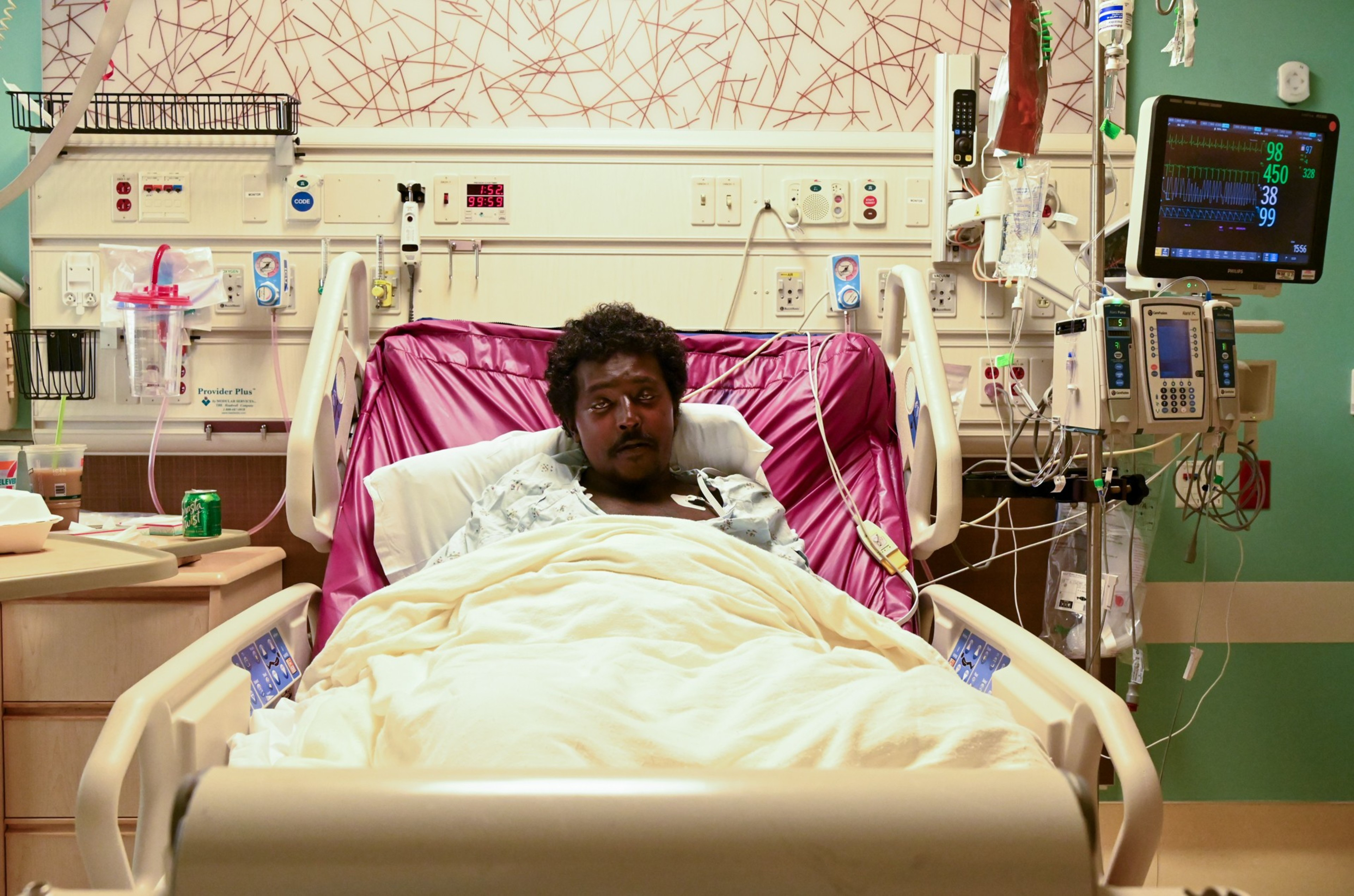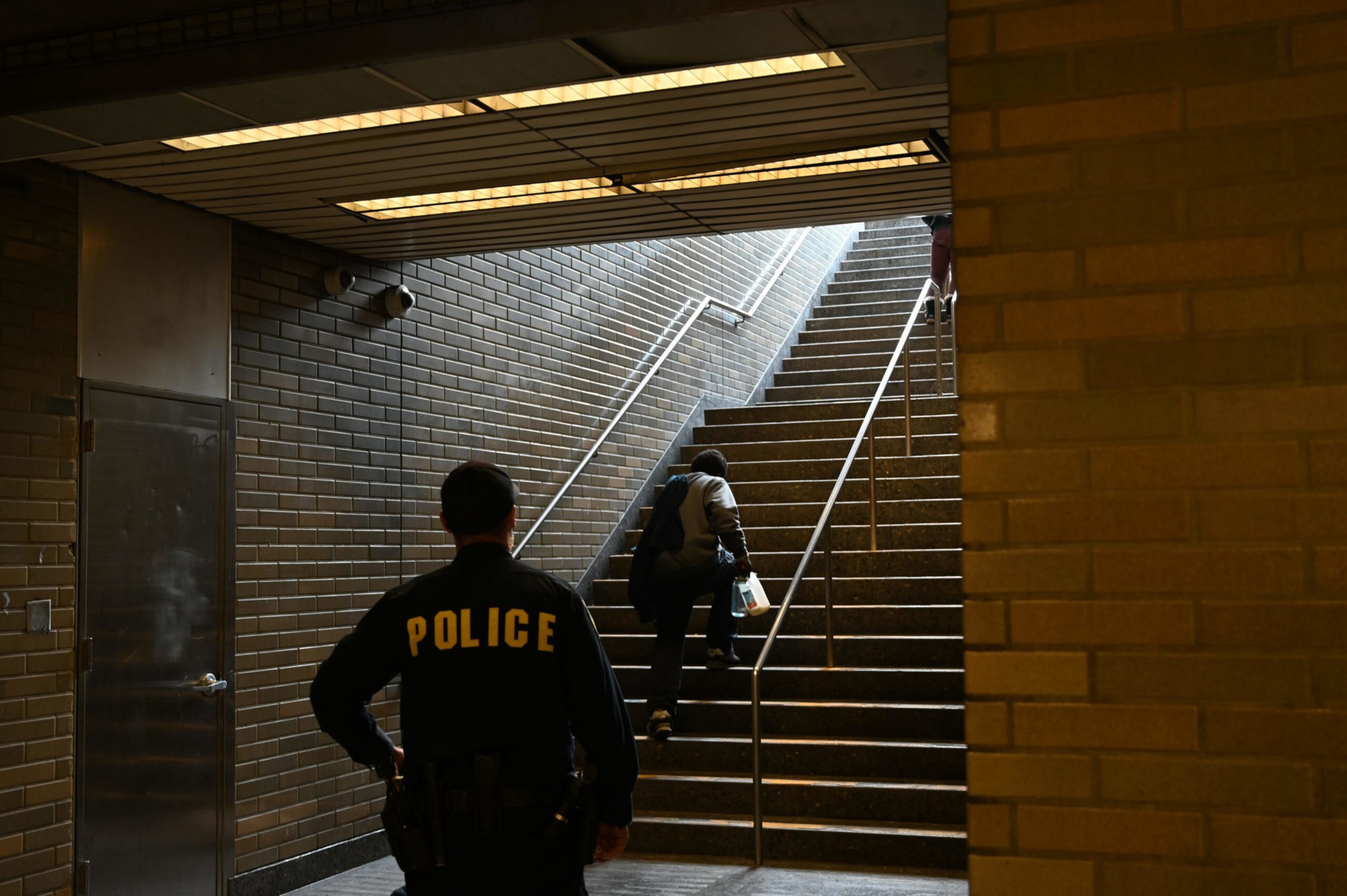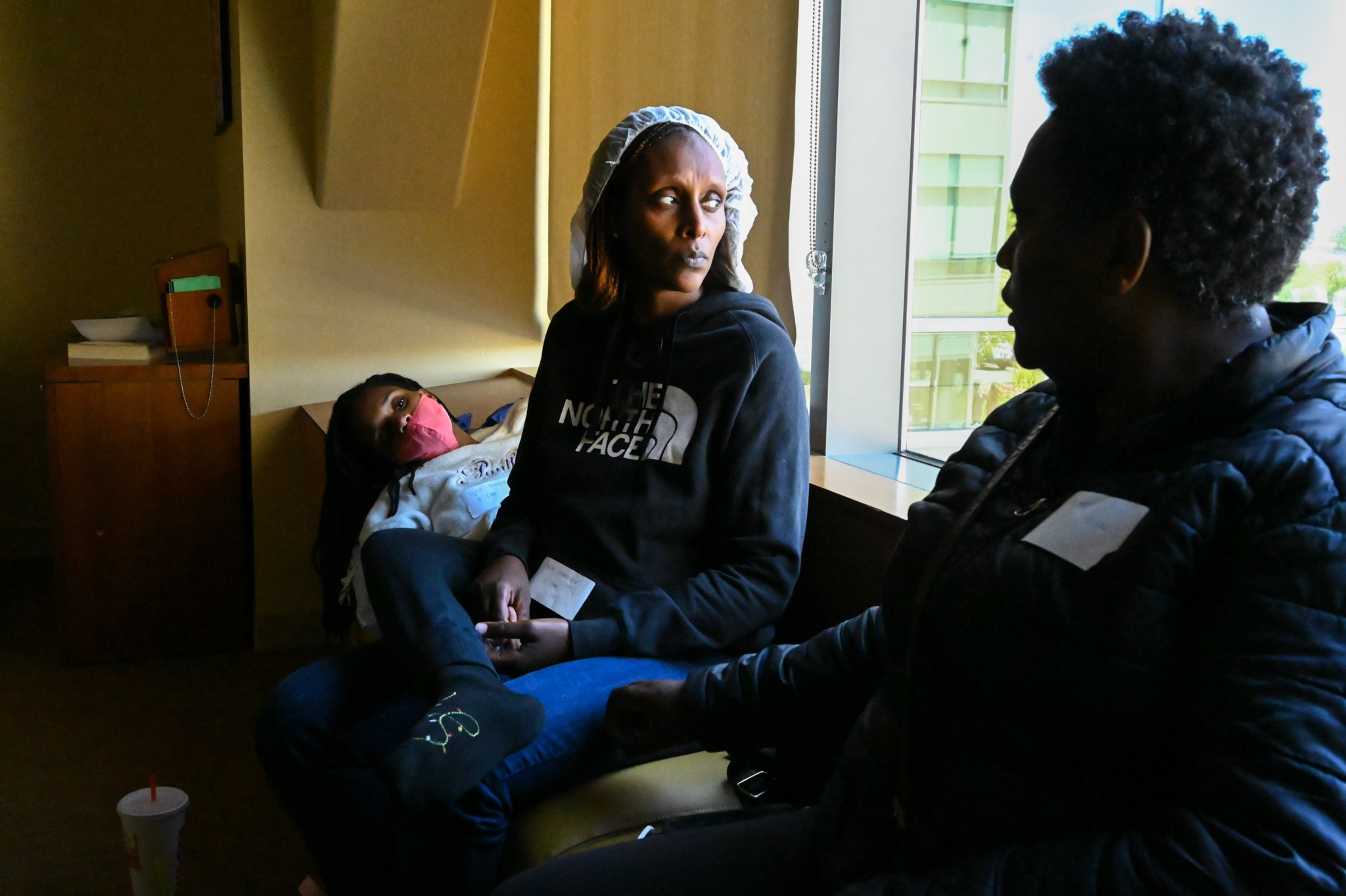It’s a late summer morning in the San Leandro Kaiser intensive care unit, and Noah Tesfa is devouring a plate of orange chicken from Panda Express. His bloated stomach is making it impossible for him to sit up, and with every bite, his fork makes a dangerous leap, dropping chow mein against his hospital garb. An empty supply of an opiate called Dilaudid hangs from his arm, and a single teardrop drizzles down his cheek. He knows he is dying but is hardly worried about that. He begs the nurse for another dose.
“Can I go home,” he asked his mother, Azieb Gebresslasie, earlier in the day.
“Where’s home?” Gebresslasie responded.
“The Civic Center,” Tesfa said.

San Francisco’s addiction crisis is on display every day outside the Civic Center. Police, drug dealers and drug users gather seamlessly, the streets sometimes filled with sick and wounded people listlessly wandering or sprawled on the sidewalks.
Tesfa’s request to go back to the area doesn’t surprise Gebresslasie. A promising student and athlete growing up in Santa Rosa, Calif., Tesfa began abusing prescription opioids while in high school. Since he graduated a decade ago, Gebresslasie has been finding and losing her son in the city’s Tenderloin district.
Gebresslasie quit her job in Santa Rosa to become a cab driver in San Francisco, stopping the car whenever she saw him. If she couldn’t find her son for a few days, she would call former BART police department officer David Touye.
“Officer Touye, to be honest, was a godsend,” Gebresslasie said. “There wasn’t anybody that cared like officer Touye and his partner.”
Touye and his partner Eric Hofstein, who have both since retired, had enrolled Tesfa in a pilot program called Law Enforcement Assisted Diversion. LEAD reimagined how law enforcement officers interacted with drug users, allowing police to refer eligible low–level offenders to social services.
But even though the program was a godsend for Gebresslasie and showed promising early results, LEAD foundered after two years, undone by distrust between police and social service workers. Its demise shows some of the barriers that stand in the way of addressing the city’s twin crises of homelessness and drug addiction—not the least being that sometimes, for some people like Tesfa, there is not a lot that can be done.

Established through a $6.9 million grant from the Board of State and Community Corrections in 2017, LEAD provided training for officers on harm reduction—the practice of providing compassionate care to people struggling with addiction.
“LEAD, the way it was designed, was a great place to refer people who were hard to refer elsewhere,” said GLIDE case manager Jason Norelli. “If you think about it, cops are actually outreach workers. They’re on the streets, they know what’s going on.”
Touye and Hofstein were among a group of officers who traveled to Seattle—the birthplace of the program—to learn how to introduce LEAD to San Francisco. The city’s program was ultimately run by the Department of Public Health through partnerships with the District Attorney’s Office, law enforcement agencies and outreach services provided by the Felton Institute and GLIDE. Officers would bring LEAD clients to a health department intake center, where they were evaluated and assigned a case manager from GLIDE or the Felton Institute.
“It was just this constant game of cat and mouse … [Tesfa] was always getting high in our station,” Touye said. “Officers understood that we’re not going to be able to arrest our way out of this problem, so let’s try to dig a little deeper.”

The LEAD program saw some clear early successes. After 12 months, 98 surveyed LEAD clients were over six times less likely to be arrested for misdemeanors and more than three times less likely to be involved in felony cases than members of a comparable control group, according to a report (opens in new tab) by California State University of Long Beach.
Many people involved with LEAD said it helped build rapport between police officers and outreach workers, who previously viewed one another with suspicion. LEAD stakeholders met bi-weekly to discuss their client’s progress and work together on strategies—a type of collaboration that was absent before the program.
“There are harm reduction people who were horrified when I decided to do LEAD. There are people who were anti–LEAD, because they’re anti–cop,” Norelli said. “We were so divergent … I feel like it was a learning process for all of us.”
Critics of the program said that LEAD unnecessarily involved law enforcement in issues that shouldn’t be considered criminal matters. In their eyes, the program itself was a compromise.
“It’s still rooted in the criminalization of homelessness. You become a criminal once you catch this charge and you negotiate your way out of that,” said former LEAD intern Jade Arellano. “I don’t think that the police should be involved in any kind of response.”

Most law enforcement officers were skeptical of harm reduction. Of the 2,000 police officers in the city working for several different agencies, no more than 60 attended a single training.
LEAD represented a radical shift for law enforcement, which has traditionally focused on abstinence as the only treatment for addiction. But better understanding began to emerge among those who bought into the program.
“The most amazing thing that happened to me during this process, over three years of working on the LEAD program, was that cops used to call me and ask me how to talk to people,” Norelli said. “A couple of the officers willing to try it had some amazing successes using this approach of harm reduction.”
Despite many stakeholders seeing potential in LEAD, the program ultimately foundered. Most officers were untrained in harm reduction practices. Case managers were overloaded. The officers who did participate reported feeling stigmatized by some of their harm reduction counterparts. Touye, for one, said it was difficult to collaborate with people who defamed his work.

“If we don’t have an effective voice in this matter, then what are we doing? [LEAD] was ultimately doomed to fail,” Touye said. “Everybody vilifies the police, but when it comes to homelessness, we’re a viable tool.”
The city decided not to continue LEAD after the two-year pilot expired, though it continues to run in over 50 cities around the country. New programs in San Francisco such as the Street Crisis Response Team, which stemmed from LEAD, have moved away from involving law enforcement.
“It was definitely not easy to see it dismantled … We all have a responsibility, and working together is the most effective way that I’ve seen,” said BART Police Department community outreach liaison Armando Sandoval.
City officials felt differently and moved on from LEAD to spare police the added responsibility of acting as outreach workers, according to Dr. Angelica Almeida, a director at the Department of Public Health.

“The LEAD program, and its structure and the types of charges it included, didn’t make sense for the landscape of San Francisco,” Almeida said. “That responsibility for treating those individuals with behavioral health needs should not fall on law enforcement.”
Supervisors Matt Haney and Hillary Ronen did not return messages seeking comment on LEAD.
The Street Crisis Response Team now handles many low-level crime calls, and outreach workers say that their relationship with law enforcement has decayed.
“[Touye and Hofstein] were great, those guys were like the dynamic duo of BART police,” Norelli said. “I’m not having direct conversations with the police anymore … It died out after LEAD fell out.”
The program also marked the tail end of Touye and Hofstein’s careers in San Francisco.
“They won’t listen to us … So it burned me out, burned Dave out. Dave quit early,” Hofstein said. “We started off with a room full of cops … By the end of the program, I was the only one left.”

For Gebresslasie, the end of the LEAD program, and Touye’s resignation, were huge blows. Other outreach programs fell short in their ability to find Tesfa, and Gebresslasie could no longer ask Touye for help.
“After he retired, I walked the whole Tenderloin up and down looking for [Tesfa] and couldn’t find him,” Gebreslassie said. “There were outreach programs that were looking for him, and they would ask me where he was at.”
The COVID-19 health emergency then made it too dangerous for Gebresslasie to wander the streets searching for her son. Apart from the occasional call from a friend or relative who spotted him, she lost contact with Tesfa entirely.
One day, moved by a dream she had the night before, Gebresslasie started her car and resumed her usual route. First, she started at the Civic Center, but he wasn’t there. She searched every corner of the Tenderloin that day, but no one had seen him. Upon returning home that evening, she received a call from the hospital. A doctor informed her that they had a patient with the name Noah Tesfa, whose kidney function was at three percent.
They gave him two weeks to live without immediate medical intervention.
“There’s pills he has to take for six months for a kidney transplant to work,” Gebresslasie said. “He’s not going to do that.”

Two weeks later, Tesfa died, a month shy of his 30th birthday. His funeral service was flooded with the sounds of sobbing family and friends, who remember him for his smile, his intelligence and the vast potential he possessed.
“I’m at peace as far as knowing he’s not in pain anymore,” Gebresslasie said. “God didn’t let him die in the streets … He let me have the time I needed.”
Photography by James Wyatt. Editing by Jonathan Weber.
